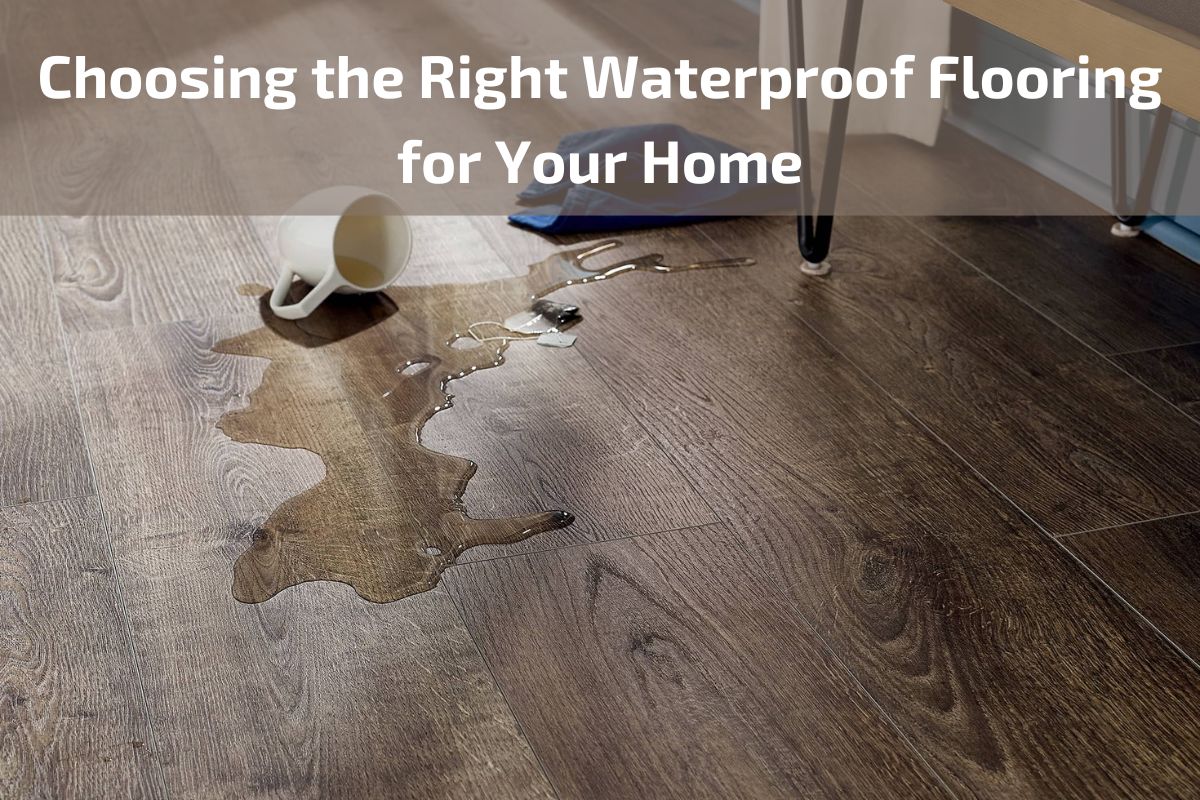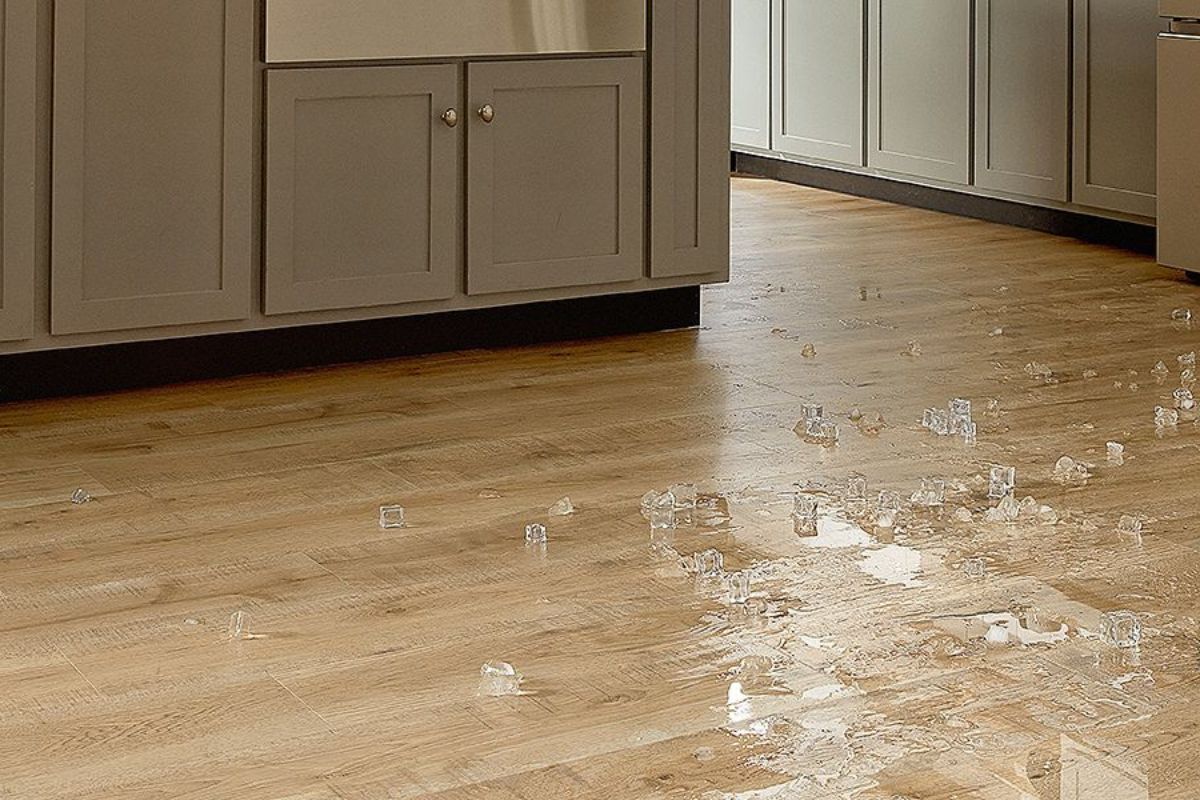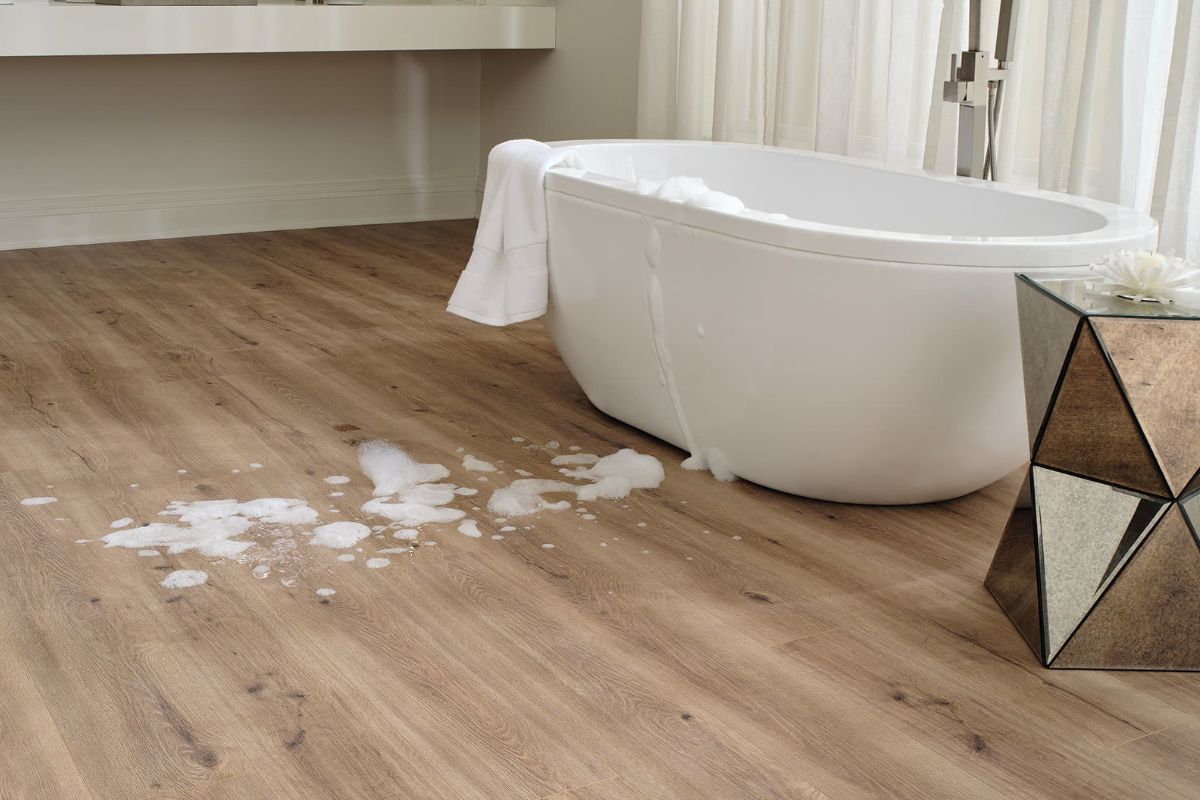
When it comes to selecting flooring for your home, durability and water resistance are often top priorities, especially in areas prone to moisture like bathrooms, kitchens, and basements. Waterproof flooring offers a practical solution to these concerns, providing peace of mind and longevity without sacrificing style.
In this guide, we’ll explore the diverse range of waterproof flooring options available, from vinyl and laminate to tile and hardwood alternatives. We’ll delve into the factors to consider when making your decision, such as material, style, and budget, ensuring you find the perfect fit for your unique needs and preferences.
Whether you’re renovating your bathroom, updating your kitchen, or finishing your basement, choosing the right waterproof flooring is essential for creating a functional and beautiful space that withstands the test of time. Join us as we navigate through the world of waterproof flooring and discover the ideal solution for your home.
Brief Overview of Waterproof Flooring
Waterproof flooring refers to a specialized type of flooring material designed to resist water damage and moisture infiltration. Unlike traditional flooring options, waterproof flooring is engineered to withstand spills, leaks, and humidity without warping, buckling, or deteriorating over time. This innovative flooring solution has gained popularity for its durability, versatility, and suitability for various indoor environments, including kitchens, bathrooms, basements, and commercial spaces. As advancements in technology continue to evolve, waterproof flooring options now encompass a wide range of materials, styles, and installation methods, providing homeowners and designers with practical and aesthetically pleasing solutions for their flooring needs.
Importance of waterproof flooring in various settings
Waterproof flooring plays a crucial role in maintaining the integrity and longevity of indoor spaces across a variety of settings. Its significance is underscored by several key factors:
Moisture Protection: In environments prone to moisture, such as kitchens, bathrooms, and laundry rooms, waterproof flooring acts as a barrier against water damage. It prevents moisture from seeping into the subfloor, which can lead to mold growth, structural deterioration, and costly repairs.
Durability and Longevity: Unlike traditional flooring options like hardwood or carpet, waterproof flooring is highly resilient to water-related wear and tear. Its durable construction ensures that it can withstand spills, stains, and heavy foot traffic without compromising its appearance or structural integrity. This durability contributes to its long lifespan, making it a cost-effective investment for both residential and commercial spaces.
Versatility: Waterproof flooring is suitable for a wide range of indoor settings, including residential homes, commercial buildings, and high-traffic areas like retail stores and healthcare facilities. Its versatility allows designers and homeowners to incorporate waterproof flooring seamlessly into various design schemes and architectural styles, enhancing both aesthetic appeal and functionality.
Health and Safety: By preventing water damage and inhibiting mold and mildew growth, waterproof flooring helps maintain indoor air quality and promotes a healthier living environment. It minimizes the risk of respiratory issues and allergic reactions associated with mold exposure, particularly in areas with high humidity levels.
Ease of Maintenance: Waterproof flooring is typically easy to clean and maintain, requiring minimal effort to keep it looking its best. Its non-porous surface repels moisture, dirt, and stains, making it ideal for busy households and commercial spaces where cleanliness and hygiene are paramount.
Definition and basic characteristics
Waterproof flooring refers to a type of flooring material that is specifically engineered to resist water penetration and damage. Unlike traditional flooring options, such as hardwood or carpet, waterproof flooring is designed to repel moisture and prevent it from seeping into the underlying layers.
The basic characteristics of waterproof flooring include:
Water Resistance: The primary feature of waterproof flooring is its ability to withstand exposure to water without becoming damaged or compromised. This resistance to water infiltration helps prevent issues such as warping, swelling, and mold growth.
Non-Porous Surface: Waterproof flooring typically features a non-porous surface that prevents water molecules from penetrating into the material. This surface barrier effectively repels spills, stains, and moisture, making it suitable for use in areas prone to water exposure, such as kitchens, bathrooms, and basements.
Durable Construction: Waterproof flooring is constructed using durable materials that are designed to withstand heavy foot traffic, impacts, and wear and tear. This durability ensures that the flooring maintains its integrity and appearance over time, even in high-traffic areas.
Variety of Materials: Waterproof flooring is available in a variety of materials, including luxury vinyl plank (LVP), luxury vinyl tile (LVT), laminate, ceramic tile, and engineered hardwood. Each material offers unique benefits in terms of aesthetics, durability, and maintenance requirements.
Easy Installation: Many types of waterproof flooring are designed for easy installation, allowing homeowners and contractors to quickly and efficiently lay down new flooring without extensive preparation or specialized tools.
Aesthetic Options: Waterproof flooring comes in a wide range of styles, colors, and patterns, allowing for versatility in design and customization. Whether replicating the look of natural wood, stone, or tile, waterproof flooring offers numerous aesthetic options to suit any decor style.
Types of Waterproof Flooring
Waterproof flooring encompasses a diverse range of materials, each offering unique features and benefits to suit different preferences and needs. Here are some common types of waterproof flooring:
Luxury Vinyl Plank (LVP) and Luxury Vinyl Tile (LVT):
- LVP and LVT are popular choices for waterproof flooring due to their affordability, durability, and versatility.
- These vinyl-based flooring options mimic the look of natural materials such as hardwood, stone, or tile while offering superior water resistance.
- LVP and LVT are available in a wide variety of colors, patterns, and textures, making them suitable for various design styles.
Tile Flooring (Ceramic, Porcelain):
- Ceramic and porcelain tiles are inherently waterproof and highly durable, making them ideal for moisture-prone areas like bathrooms and kitchens.
- These tiles come in a vast array of sizes, shapes, and finishes, allowing for endless design possibilities.
- Proper installation with sealed grout ensures maximum water resistance and longevity.
Laminate Flooring:
- Laminate flooring consists of a high-density fiberboard (HDF) core with a photographic layer that replicates the look of natural materials.
- While traditional laminate flooring is not inherently waterproof, newer waterproof laminate options feature water-resistant cores and surface coatings that provide enhanced protection against moisture.
- Waterproof laminate flooring is suitable for areas with moderate moisture exposure but may not be recommended for fully wet environments.
Engineered Hardwood:
- Engineered hardwood flooring consists of multiple layers of wood veneer bonded together with adhesives.
- While traditional hardwood is susceptible to water damage, engineered hardwood offers improved resistance to moisture due to its construction.
- Engineered hardwood is available in a variety of wood species, finishes, and plank sizes, providing the timeless beauty of hardwood with added durability.
Concrete Flooring with Waterproofing Sealants:
- Concrete flooring can be made waterproof by applying specialized sealants and coatings that create a protective barrier against water intrusion.
- Waterproofing sealants are commonly used in basements, garages, and outdoor spaces to prevent water penetration and moisture-related issues.
- Concrete flooring offers durability and strength, making it a practical choice for high-traffic areas and outdoor applications
Benefits of Waterproof Flooring
Waterproof flooring offers numerous advantages that make it a preferred choice for both residential and commercial applications. Here are some key benefits of waterproof flooring:
Moisture Resistance: The primary benefit of waterproof flooring is its ability to resist moisture and water damage. It prevents water from seeping into the flooring material, which helps prevent issues such as warping, swelling, and mold growth.
Durability and Longevity: Waterproof flooring is constructed using durable materials that are designed to withstand heavy foot traffic, impacts, and wear and tear. This durability ensures that the flooring maintains its integrity and appearance over time, resulting in a longer lifespan compared to traditional flooring options.
Versatility: Waterproof flooring is available in a wide range of materials, styles, colors, and patterns, offering versatility in design and customization. Whether replicating the look of hardwood, tile, or stone, waterproof flooring allows for endless design possibilities to suit any decor style.
Suitability for Moisture-Prone Areas: Waterproof flooring is particularly well-suited for areas prone to moisture and water exposure, such as bathrooms, kitchens, basements, and laundry rooms. Its moisture resistance makes it an ideal choice for environments where traditional flooring options may be susceptible to damage.
Easy Maintenance: Waterproof flooring is typically easy to clean and maintain, requiring minimal effort to keep it looking its best. Its non-porous surface repels spills, stains, and dirt, making it ideal for busy households and commercial spaces where cleanliness and hygiene are priorities.
Improved Indoor Air Quality: By preventing water damage and inhibiting mold and mildew growth, waterproof flooring helps maintain indoor air quality and promotes a healthier living environment. It minimizes the risk of respiratory issues and allergic reactions associated with mold exposure, particularly in areas with high humidity levels.
Cost-Effectiveness: While waterproof flooring may have a higher upfront cost compared to traditional flooring options, its long-term durability and resistance to water damage can result in cost savings over time. With fewer repairs and replacements needed, waterproof flooring offers a cost-effective solution for homeowners and businesses alike.
Maintenance Tips for Waterproof Flooring
Proper maintenance is essential for preserving the appearance and longevity of waterproof flooring. Here are some key maintenance tips to keep your waterproof flooring in top condition:
Regular Cleaning: Sweep, vacuum, or dust mop your waterproof flooring regularly to remove dirt, dust, and debris. This prevents scratches and abrasions that can dull the surface over time.
Use Gentle Cleaning Solutions: When mopping your waterproof flooring, use a mild cleaning solution specifically formulated for the type of flooring material. Avoid harsh chemicals, abrasive cleaners, and excessive water, as these can damage the flooring surface.
Prompt Spill Cleanup: Wipe up spills and stains immediately using a soft, damp cloth or mop. Avoid allowing liquids to sit on the flooring surface for an extended period, as this can lead to staining and damage.
Protective Mats and Rugs: Place protective mats or rugs at entryways, in front of sinks, and in high-traffic areas to capture dirt, moisture, and debris. This helps prevent scratches and reduces the risk of water damage from wet shoes or spills.
Use Furniture Pads: Place felt or rubber pads under furniture legs to prevent scratches and indentations on the waterproof flooring surface. Avoid dragging heavy furniture across the floor, as this can cause damage and wear.
Trim Pet Nails: Keep your pet’s nails trimmed to prevent scratches and gouges on the flooring surface. Consider placing mats or rugs in areas where pets frequently walk or rest to minimize wear and tear.
Avoid Standing Water: While waterproof flooring is resistant to water damage, standing water should still be avoided. Promptly wipe up any spills or water puddles to prevent moisture from seeping into seams and joints.
Routine Inspections: Periodically inspect your waterproof flooring for signs of wear, damage, or loose seams. Address any issues promptly to prevent further damage and maintain the integrity of the flooring.
Follow Manufacturer Guidelines: Refer to the manufacturer’s guidelines and recommendations for cleaning and maintenance specific to your waterproof flooring product. Following these guidelines will help ensure optimal performance and longevity.
Conclusion
In conclusion, waterproof flooring emerges as a versatile and practical solution for addressing the challenges of moisture exposure and maintaining the integrity of indoor spaces. With its ability to resist water damage, durability, versatility in design, and ease of maintenance, waterproof flooring offers numerous benefits for both residential and commercial settings.




